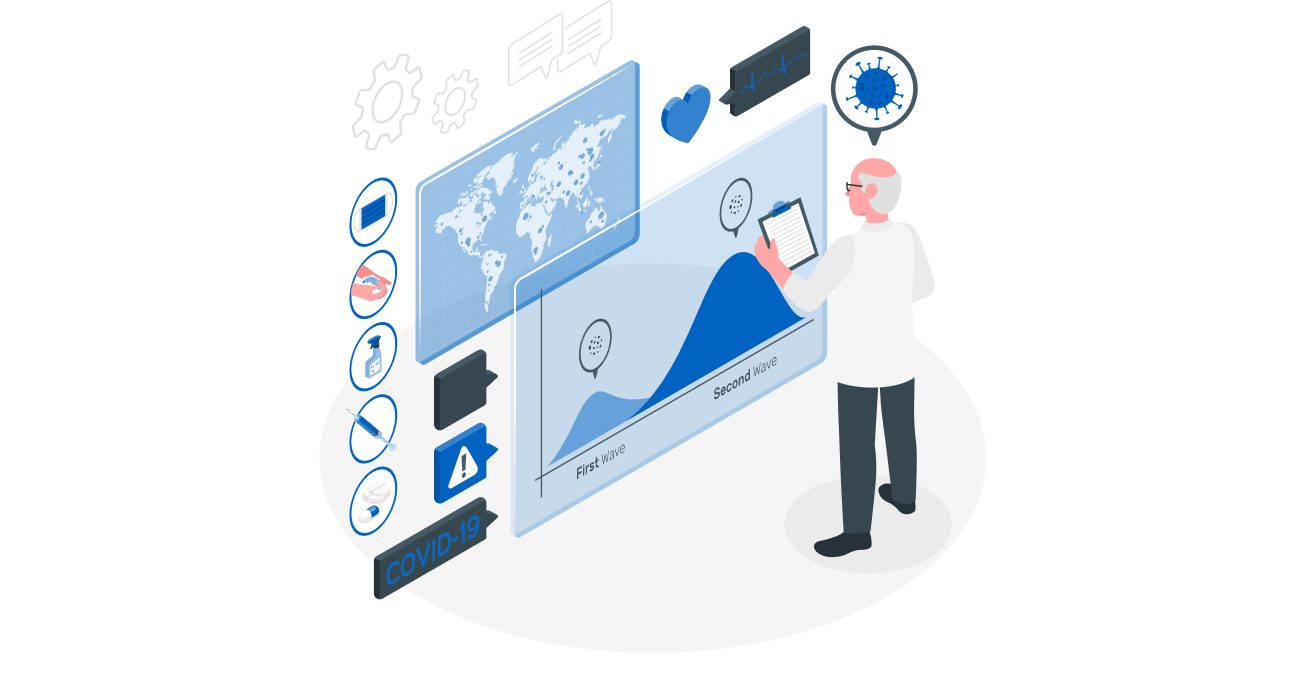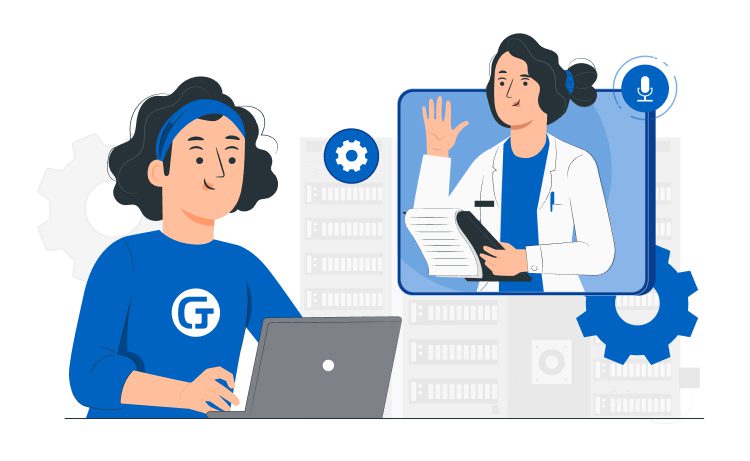
Healthcare Cloud Computing: Key Benefits



The cloud-based health information system has grown significantly over the past two years. It is confirmed by numerous studies. For example, the 2021 BDO report shows that 93% of global healthcare organizations have gone (or are going to) go digital, and 78% are adopting cloud computing (CC).
Of course, the pandemic has played a major role here. Doctors are forced to look for more convenient working methods, and the SS seriously helps in this. In this article, we will tell you for what purposes these technologies are used.
Content
The demand for such solutions is high because institutions strive to optimize their technology infrastructure. Their implementation began a long time ago but progressed slowly and faced numerous barriers.
Such growth has accelerated over the past few years under the influence of 3 factors: the development of innovations (IoT, ML, telemedicine, Big Data), changes in customer requirements, and pandemic restrictions. In the new reality, the transition to the cloud has become an essential step for the business, including medical.
Why is it necessary? With this technology, IT resources can be provided on demand on the Internet with pay-as-you-go. Users do not need to work with physical data centers: buy, host, and maintain them. Instead, technological capabilities are available: computing services, databases, and storages. Resource deployment can also be performed for areas such as IoT, AI, analytics systems, data lakes, etc.
You can use the cloud as needed for various purposes: backup, emergency recovery, analysis, product creation & testing, or optimization of consumer-oriented web applications. CC makes resources more agile, ensuring faster innovations, increased productivity, and reduced scaling costs.

Critical business processes related to patient care and internal management can be transferred to the cloud. For example, doctors can develop individualized treatment plans, quickly share information, store diagnostic research data in remote archives (PACS), and get easy access to them at any time. Let’s take a look at which well-known companies use CC and why.
CC allows you to build a large-scale IT infrastructure and unite all “participants” within the information ecosystem: clinics, insurance organizations, research or analytical companies, and those who need medical care.
How and under what conditions a cloud environment is used depends on its type. These types can be viewed from a distribution and deployment perspective.
This is a cloud solution stored on a server on the Internet. The client (ordinary user) accesses it through the API or browser. All tasks for managing the basic infrastructure, maintenance, updating, security lie with the service provider.
With this solution, the user works online as needed from anywhere in the world. You can deploy apps and your OS in this infrastructure. The service is paid for a particular period, the number of users, or following other schemes. Basic features are available for free.
A simple example of such a model is the free online Google Docs office. It does not require any drivers or installations. Just create a Google account and follow the link to start working with documents and spreadsheets. Other examples include CRM systems, monitoring and analytics tools, file storage services (Dropbox), and photo managers (Flickr).
A client (usually a system administrator) uses information technology resources with the necessary processing power and memory allocated. According to this model, organizations can rent servers, data storage databases, operating systems, or networks. The provider exposes the infrastructure and OS where the user can deploy and manage apps.
Supplier responsibilities include installation and maintenance of hardware and basic software, i.e., monitoring the physical and virtual infrastructure only. The client has full administrative rights inside the rented virtual servers and independently configures and maintains the OS on these servers. Examples: IBM Softlayer, MS Azure, and Amazon EC2.
The user (developer) works with the IT infrastructure, OS, apps, development and testing tools, database management systems, etc. It is all possible on the platform, where developers are offered lots of customizable features.
Here you can create solutions of different complexity and work in a team. It is cheaper to use this model since the costs of deploying the platform and middleware are borne by the provider. It also provides the flexibility to deliver created apps to consumers. Examples: Google App Engine, AWS Elastic Beanstalk, OpenShift, and Windows Azure.
In terms of deployment:

CCs create a great collaboration space for healthcare professionals. Doctors from different departments and institutions can exchange knowledge and experience, hold online conferences, and consult on diagnostics and treatment.
They receive patient data from electronic records stored in the cloud. Specialists can also view global information, including reports, patient data, industry research results, news from the world of medicine.
It’s not just doctors who benefit from technology. Patients can view their data and test results at any time, which enhances disease and treatment awareness.
Also, patients can be sure that they will not be prescribed unnecessary tests and medications since the doctor previously studied the history of examinations and treatment. In addition, cloud-based tools enable telemedicine consultations remotely, positively impacting the patient experience.
Healthcare professionals have to deal with a huge amount of data that is growing every year. But the cloud solves this problem. The remote space can contain all patient records, prescriptions, lab tests, insurance records, IoT metrics…
The space expands as new data is added and the load increases. In this environment, workflow is faster and safer because the information is available on any device for a group of people (depending on access rights).
As we mentioned above, the cloud allows you to manage capacity by increasing or decreasing it following current requirements. For example, the storage size can be expanded due to the increased flow of patients and, accordingly, the larger amount of information.
The local hardware cannot provide it. This flexible environment makes it easier for hospitals to adapt to peak disease seasons. So, there is a high incidence of influenza in autumn, which means that the level of attendance in hospitals rises sharply. With innovation, doctors are ready for any workload.
Platforms integrate with AI, ML, and DL technologies to empower analytics. Using advanced analytical approaches, organizations can make quick decisions based on reliable and up-to-date data. AI can calculate the risks for the patient according to the predictive model and automatically notify the specialist when the norm is exceeded.
Moreover, such analytics makes it possible to predict the needs of institutions (for example, in beds) based on 3 factors: the infection rate in the region, the number of new patients, and the approximate date of leaving the hospital.
Using CC services is more cost-effective than purchasing your own hardware resources because modern services operate on flexible subscription options and charge you pay-as-you-go. It allows organizations to convert the capital costs associated with data centers and physical servers into variable costs. They can only pay for the IT capabilities they use, so even small institutions with minimal budgets can use the cloud.
Despite many advantages, the cloud model has some limitations. Its drawbacks are related to the security, functionality, and stability of the provision of services. Let’s take a quick look at each problem.

According to reports, the CC market reached $21.479 billion in 2019 and is expected to grow to $64.635 billion by 2026. The popularity of advanced analytics, IoT, wearable devices, and AI contributes to such changes.
Population growth and the spread of diseases will also have a significant impact. According to forecasts, the SaaS segment will become the market leader in the future. If you want to improve data management efficiency in your institution, start transforming right now!
These are remote services accessed via the Internet. They are used to store, process, and manage data. You can use them for free or via subscription (depending on the type).
There are SaaS, IaaS, and PaaS, which differ in usage and access. They have different target audiences: ordinary users, system administrators of companies, and developers, respectively. There are also differences in the deployment method: for large audiences (public), for organizations (private), for groups of people (community), or a combination of clouds (hybrid).
Such technologies are often used to store information about patients and transfer them to other specialists. Thanks to integrations with AI and ML, you can collect and analyze data to predict risks. Using the cloud instead of local data centers and physical servers reduces costs by several times.








